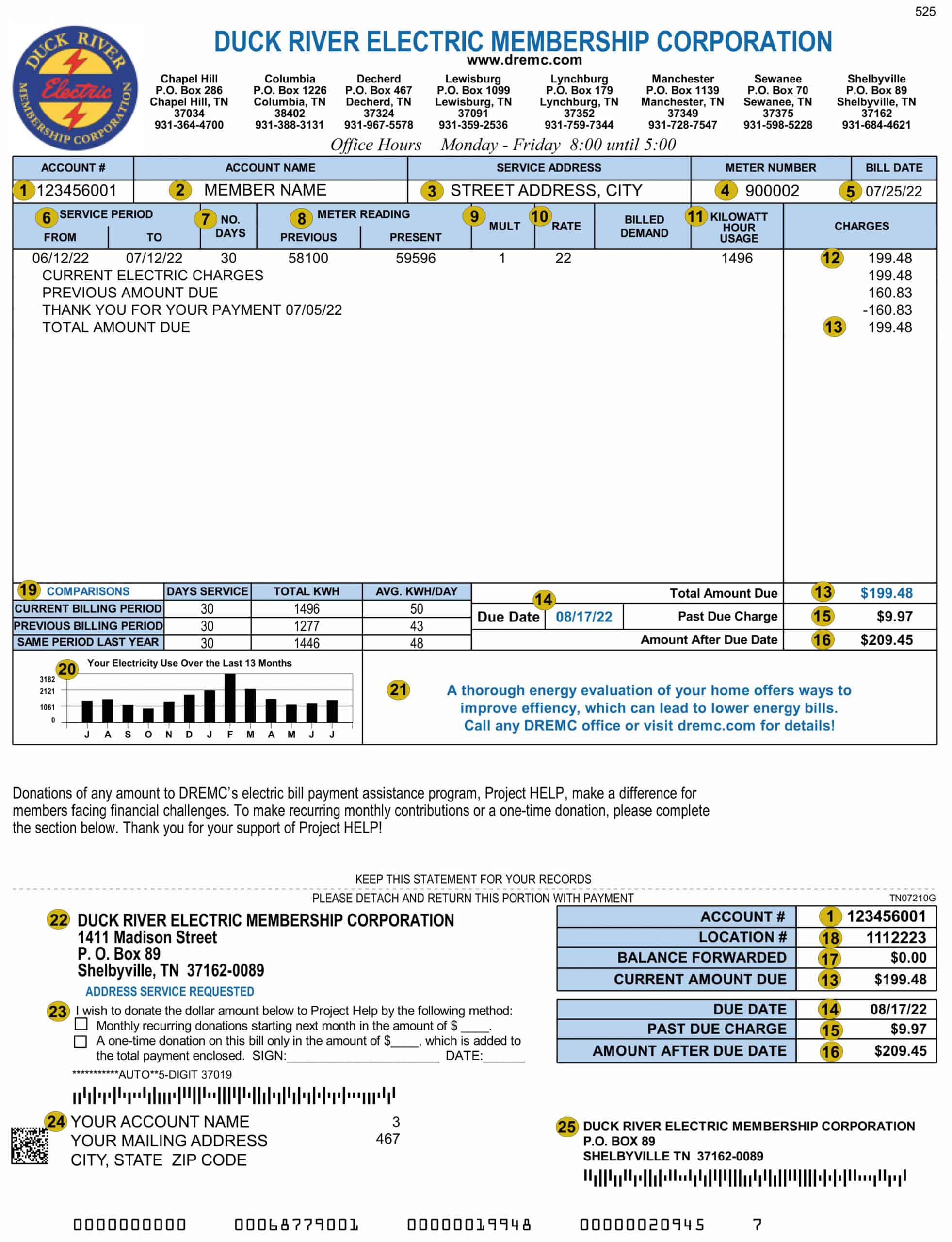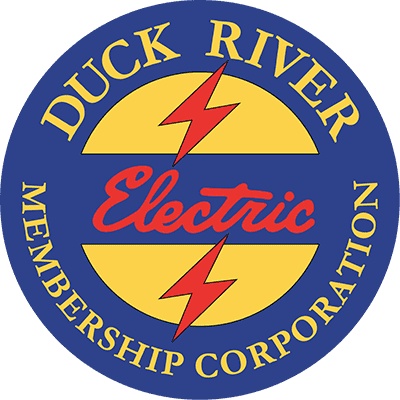
DREMC Residential Bill Explanation
1 – This is the unique account number for electric service at this location.
2 – This is the name the account is listed under upon establishing service.
3 – The service address is the physical location address where service is established.
4 – The meter at the location has a unique number and is used for identification purposes.
5 – This is when the bill/invoice was printed for the current billing cycle.
6 – The service period is the timeframe, typically 30 days, that the current bill includes.
7 – This is how many days are included in the billing cycle for the service period.
8 – Previous and present meter readings are shown each month and used to calculate the current bill.
9 – A multiplier is used at locations where CT meters (current transformer meters) are installed to calculate electricity. Typically, residential meters have a multiplier of “1” unless a CT meter is installed to calculate electric use for more than one wired location on the property.
10 – The rate classification refers to the rate schedule used for billing purposes.
11 – The kilowatt-hour use is based on the amount of electricity used and measured by the meter.
12 – The billing amount due for the account based on kilowatt use.
13 – If applicable, other charges like security light rentals or other miscellaneous service charges may be included on the bill. The total amount due will include all monthly fees and charges due.
14 – This is when the payment is due to avoid a late fee. The due date is the same each month for this location.
15 – The penalty amount is a percentage of the bill and applied if payment is made after the due date.
16 – This is the total billing amount after the due date.
17 – If billing charges from the previous month have carried over to the current month, they will be included here.
18 – The location number is an engineering reference for DREMC mapping purposes.
19 – Each bill includes historical data for the current and previous months’ electric use and the same month of the previous year to help you compare kilowatt use.
20 – The 13-month trendline chart compares electric use and shows how seasonal changes affect your bill. The kWh use is the energy used during the billing cycle that is calculated from the meter readings and multiplier.

21 – In this area each month, DREMC shares important messages related to your electric service and the programs and services the cooperative offers.
22 – This is DREMC’s headquarters mailing address.
23 – DREMC makes it possible for members to donate $1 or more each month to Project HELP. Completing this section on the bill will opt you in to participate. DREMC will include the indicated donation amount on the following months’ billing statements until you discontinue participation in the assistance program.
24 – This is the address where your bill will be mailed. If this address changes, please notify DREMC to ensure account information is up to date.
25 – DREMC has eight district offices; the mailing address for the district office serving your area will be included here.
